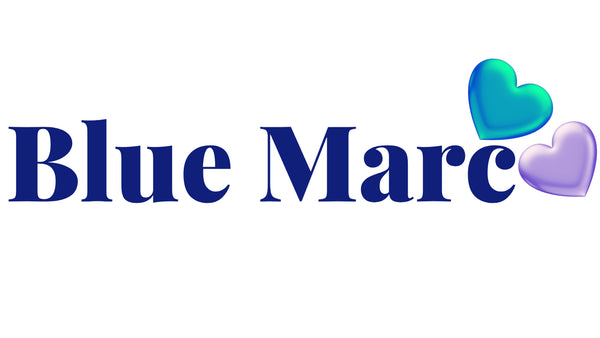
🧠 The Wonders of Toddlers: Unleashing Their Creativity and Curiosity
Share
🌟 Introduction: The Magic of the Toddler Years
Toddlers are tiny adventurers navigating a world full of firsts. From discovering colors to questioning the way things work, they’re constantly experimenting, imagining, and exploring. While this stage can feel exhausting at times, it’s also when some of the most important foundations for learning, emotional intelligence, and creativity are laid.
In this post, we’ll explore the power of curiosity, the importance of creativity, the role of play in development, and how to set healthy boundaries—all essential tools to help toddlers become confident, empathetic, and independent thinkers.
🔍 Curiosity is Key: Why Toddlers Are Natural Explorers
By age 1–3, toddlers are developmentally wired to explore. Their brains are growing at lightning speed—more than 1 million new neural connections form every second during the first few years of life.
Instead of trying to "contain" curiosity, it’s more effective to channel it into safe, creative exploration. Asking open-ended questions and offering interactive experiences helps toddlers develop critical thinking, language skills, and a sense of agency.
🧠 Curiosity-Boosting Prompts & Activities:
| Prompt | Activity |
|---|---|
| “What do you think will happen if we mix these two colors?” | Use watercolors or washable paints to create new shades together. |
| “How does this toy work?” | Offer toys with levers, zippers, or moving parts. Ask your toddler to show you how they think it works. |
| “What do you think is inside this box?” | Fill a mystery box with a soft toy or familiar object and use it for a tactile guessing game. |
| “What do you see in the clouds?” | Lay on the grass and cloud-gaze, encouraging visual thinking and imagination. |
🧩 Pro Tip: Avoid yes/no questions and instead use “what,” “how,” and “why” to keep conversations flowing.
🎨 Let Their Imagination Run Wild: Nurturing Toddler Creativity
Creativity helps toddlers make sense of the world and express feelings they may not yet have words for. It boosts self-confidence, supports cognitive flexibility, and lays the groundwork for innovative problem-solving.
🖍️ Ways to Encourage Creativity at Home:
- Set up a "yes" space with crayons, construction paper, stamps, and modeling clay where your toddler is free to explore.
- Offer open-ended materials (cardboard, fabric scraps, pipe cleaners) for building or crafting.
- Introduce creative challenges like “Make an animal out of play dough” or “Draw a picture of how you feel today.”
- Rotate toys to avoid overstimulation and spark new ideas with familiar tools.
- Play pretend using costumes, puppets, or kitchen tools—it builds narrative skills and empathy.
👩👸🏾🎨 Modern Tip: Try "process art" instead of product-focused crafts. Let the focus be on doing, not the outcome.
🧩 The Power of Play: Why It’s a Toddler’s Superpower
Play is how toddlers learn best—it integrates language, emotion, motor skills, and problem-solving in one activity. According to the American Academy of Pediatrics, unstructured play is essential for healthy development and should be part of every day.
🧸 Fun Games That Build Skills:
| Game | Benefits |
|---|---|
| Simon Says | Listening, coordination, impulse control |
| I Spy | Vocabulary, attention to detail |
| Puzzles | Spatial awareness, persistence |
| Sensory bins (rice, beans, water) | Fine motor development, focus |
| Dress-up play | Creativity, narrative building, empathy |
| Obstacle courses | Gross motor skills, confidence |
💡 Fresh Idea: Set up “Invitation to Play” stations—leave out themed toys or sensory bins overnight and let your toddler explore them freely in the morning.
💬 Setting Boundaries: Teaching Toddlers Big Life Lessons in Small Moments
Boundaries give toddlers the structure and security they need to thrive. At the same time, you’re introducing foundational life lessons like empathy, respect, and responsibility—skills that shape who they’ll become in school, friendships, and family life.
🛠️ Life Lessons Through Everyday Moments:
| Skill | How to Teach It |
|---|---|
| Empathy | Narrate feelings: “You’re sad your block tower fell. That’s okay—it’s hard when something breaks.” |
| Respect | Model asking before touching or taking something. Use “Let’s ask if we can join the game.” |
| Responsibility | Assign simple tasks: putting toys away, feeding a pet, or choosing clothes. |
| Gratitude | Practice thank-yous and reflect on kind acts: “Wasn’t that nice of Grandma to bring cookies?” |
| Accountability | Use natural consequences: “The book tore, so we’ll tape it together and be more gentle next time.” |
🧔🏾♂️👩🏾👧🏾 Pro Tip: Use visual cues like picture charts or daily schedules to help toddlers anticipate routines and boundaries.
🧠 BONUS: How Toddlers Learn Best
To help your blog stand out with updated insights, here are research-backed tips on toddler learning:
- Repetition builds memory: Repeating stories, songs, and routines strengthens neural connections.
- Toddlers learn through movement: Incorporate motion into learning activities (e.g., count stairs, jump by colors).
- Serve and return interactions (like responding to babbling or gestures) are proven to build language and trust.
- Executive function skills (like focus and self-control) begin developing now through guided play.
❤️ Conclusion: Wonder Lives in Every "Why?"
From endless questions to spontaneous artwork, toddlers invite us to see the world with fresh eyes. By encouraging their curiosity, nurturing their creativity, and guiding them with love and boundaries, we empower them to grow into thoughtful, confident, and imaginative individuals.
So go ahead—mix colors, build castles, chase clouds, and answer their million “whys.” The wonder of toddlerhood doesn’t last forever—but the lessons it teaches and the memories you create will.
